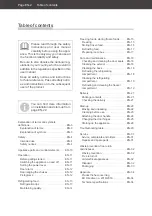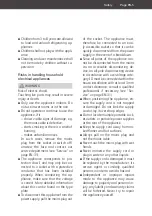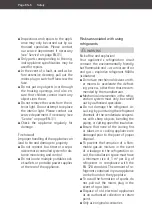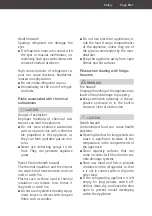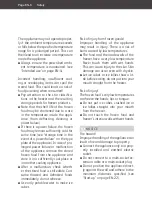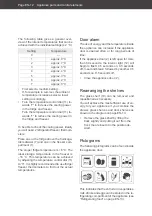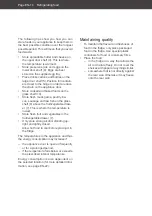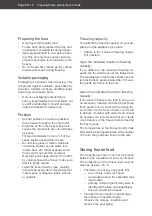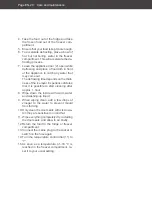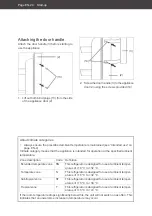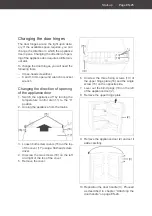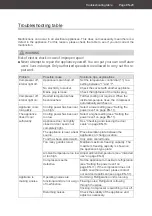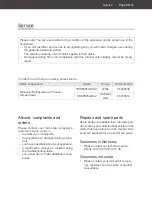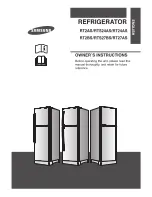
Freezing foods, storing frozen foods
Page EN-16
Preparing the food
• Only freeze high quality food.
• Freeze fresh and prepared food dry and
unseasoned. Unsalted foods last longer.
• Allow prepared food to cool before freez-
ing. This not only saves power, but also
prevents excessive frost formation in the
freezer.
• Do not freeze fizzy drinks, as the carbon
dioxide will escape during freezing.
Suitable packaging
Packaging is important when freezing. This
will protect against oxidation, penetration by
microbes, transfer of odours and flavourings
and drying out (freezer burn).
• Only use packaging material that is
strong, impermeable to air and liquid, not
too stiff and labelled. It should be desig-
nated as suitable for freezer use.
Portions
• Use flat portions as much as possible;
these freeze through to the core faster.
• Expel the air from the freezer bag as is
causes the contents to dry out and takes
up space.
• Fill liquid containers no more ¾ full, be-
cause liquids expand when frozen.
• Do not store glass or metal containers
containing liquids such as water, lem-
onade, beer, etc. Water expands when
frozen and may burst the container.
Only high percentage alcohol (from 40%
by volume) should be frozen; make sure
that it is tightly sealed.
• Label the frozen food by type, quantity,
amount and expiry date. Use waterproof
marker pens or adhesive labels wherev-
er possible.
Freezing capacity
You will find the freezing capacity for your ap-
pliance on the appliance type plate.
• Adhere to the maximum freezing capaci-
ty if possible.
Up to the indicated maximum freezing
capacity:
If you adhere to the maximum freezing ca-
pacity, the food will freeze at the fastest rate.
The temperature in the freezer briefly rises af-
ter placing fresh goods inside. After 12 hours,
the goods are frozen to the core.
Above the indicated maximum freezing
capacity:
If you want to freeze more food in one go as
an exception, freezing will take longer. Keep
fresh goods out of contact with existing fro-
zen foods, as the frozen foods could start
to defrost. If contact with stored food cannot
be avoided, we recommend that you create
a cold reserve in the freezer before freezing
the fresh goods.
The temperature in the freezer briefly rises
after placing fresh goods inside. After another
12 hours, the goods are frozen to the core.
Storing frozen food
The deep-freeze chain must not be broken
between the manufacturer and your freezer.
The temperature of the frozen food must al-
ways be at least –18 °C.
• Therefore, do not buy any goods that
– are in frosty, overly icy chests
– are stacked above the stipulated max
load marker
– partially clumped (particularly easy to
identify with berries and vegetables)
– have snow and juice traces.
• Transport frozen foods in special styro-
foam boxes or insulated bags.
• Observe the storage conditions and
times on the packaging.

